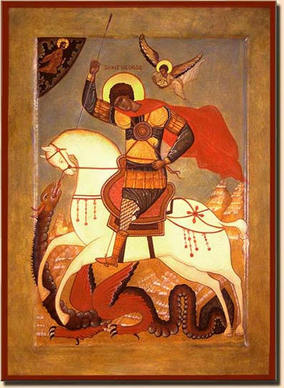
How can anyone not like Saint George's story? Whatever happened to the real cult of Saint George? Does the saint have contemporary relevance for us today? What witness does he offer the "post-modern" people we purport to be? Do we still struggle against Satan, the evil one, the great tempter? How do deal with the noontime devil that seeks to divide us from a filial relationship with God? Jesuit Father George Nedungatt, professor emeritus of the Pontifical Oriental Institute (Rome) wrote an essay "Saint George without the Dragon" explaining contemporary --at least since Vatican II-- Church's remembrance of and prayerful reliance on, the Lord's dragon slayer. As the summary of the article says, "The post-conciliar reform has entered the liturgical celebration of St. George [on April 23] amidst the facultative memoirs, attributing the historical date of his martyrdom in Lydda circa 303. It follows the protest, both by those who have chosen St. George as patron and, and for opposing reasons, by those who deny the killing of the dragon by the saint. To shed light on the issue, the article distinguishes between the current liturgical (the cult certificated since ancient time on the saint's tomb), and the literary tendency, (legends based on his figure as a symbol of the struggle against the forces of evil)." You can read about Saint George in La Civiltà Cattolica (3859, 2011, II, pp. 20-29).


Leave a comment